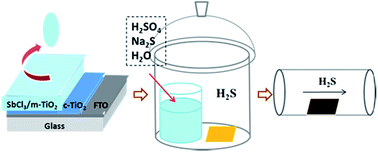Solid-state nanocrystalline solar cells with an antimony sulfide absorber deposited by an in situ solid–gas reaction†
Abstract
An Sb2S3 absorber layer is coated on mesoporous TiO2 films through a sequential deposition method: SbCl3 aqueous solution is first deposited, followed by reaction with H2S gas and further thermal annealing. Under our conditions, the Sb2S3-based solid-state heterojunction solar cells yield efficiencies of up to 6.27% at 100 mW cm−2 AM 1.5 G.



 Please wait while we load your content...
Please wait while we load your content...